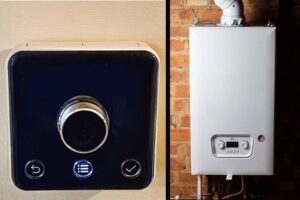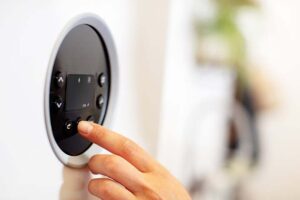Table of Contents
Loft insulation must be any homeowner’s first port of call when establishing some technique of enhancing the interior atmosphere as well as decreasing heating costs and squandering electricity. As it has been pointed out by many consumers by 2025 there shall be increasing realization on the part of homeowners on the need to conserve energy as well as implement sustainable production and use of energy hence they shall keep on asking for customized packages for filling up their lofts. This is your one-stop loft insulation guide covering everything you wanted to know from why it should be done to what grant are available to what material is used for the process and how to get the best out of it.
What is Loft Insulation?
Loft insulation can be best defined as the act of putting insulating material to the part of a building that can only be accessed through the roof most often in between the joists or the rafters. Through the stipulation of such insulation layer, it becomes possible to keep the house warm during the cold season all without incurring additional charges for heating. It also is useful in aiding to maintain a house warm during some of the colder months of the year. This way, it can help slash your heating costs by up to a quarter, and so promote a reduction in carbon emissions making it an eco friendly home improvement.
Benefits of Loft Insulation
Proper loft insulation offers numerous benefits that impact both the environment and your budget.
Benefit | Details |
Energy Savings | Reduces heat loss, lowering heating bills by up to 25%. |
Increased Property Value | Enhances energy rating, increasing the property’s resale value. |
Improved Comfort | Stabilizes indoor temperatures, providing a more comfortable living environment. |
Environmental Impact | Decreases carbon footprint, supporting sustainability goals. |
Health Benefits | Reduces indoor dampness, lowering risks associated with mold and respiratory conditions. |
Government Incentives | Qualifies for grants and tax incentives that can offset installation costs. |
Types of Loft Insulation Materials
It is always important to choose the correct type of insulation material because each of them carries certain benefits such as cost, thermal performance and compatibility. Here is a comparison of the most popular loft insulation materials available in 2025:
Material Type | R-Value per Inch | Cost per Square Foot | Pros | Cons |
Mineral Wool | 3.0 – 3.3 | $1 – $2 | Excellent fire resistance, soundproofing | Susceptible to moisture |
Fiberglass | 2.2 – 2.7 | $0.80 – $1.50 | Lightweight, cost-effective, easy to install | Can irritate skin and lungs |
Spray Foam | 6.0 – 7.0 | $3 – $5 | High R-value, air sealing | Expensive, requires professional installation |
Cellulose | 3.5 – 3.7 | $1 – $2 | Eco-friendly, uses recycled materials | Can settle over time |
Sheep’s Wool | 3.5 – 4.0 | $2 – $4 | Natural, renewable, self-regulates humidity | Higher cost |
Loft Insulation Grants Available in 2025
As awareness of the effects of climate change increases, governments and other agencies maintain their subsidies and bonuses for people who undertake energy-saving repairs . Some of the loft insulation grants and schemes are as follows that people can use to lessen the costs in 2025.
Loft Insulation Grants: Social and Building Types
- Green Home Grants: Provides partial support for financing insulation assembly. Qualification depends on income as well as energy efficiency requirements.
- ECO (Energy Company Obligation): This grant is provided by energy suppliers and it aims at supporting low income earner families.
- Local Government Incentives: Often local governments provide residents with rebates and attractive financial stimuli on the installation of lofts, as part of local sustainability initiatives.
- Renewable Heat Incentive (RHI): Alternatively, for any homeowner fitting the approved low carbon technologies including the eco-friendly insulation materials, the RHI assists in paying for installation via regular incentives.
For 2025, It is recommended to contact the relevant local and national energy offices for latest information since these grants may be changed.
How to Choose the Right Loft Insulation Material
The decision as to what insulation material to use depends on cost, thermal efficiency, ease of installation, and durability. Below are some considerations to help guide your choice:
- Energy Efficiency Needs: Increased R-values are better for insulation though they might just be more expensive.
- Budget: The cost per square foot might be quite different; the relationship between initial expenses and costs in several years.
- Installation Environment: This is particularly true for the areas with high humidity and risk of mould; spray foam or sheep’s wool should be used.
- Environmental Impact: Discs made from cellulose or sheep’s wool will give a natural look that environmental-friendly homeowners seek in their homes.

Loft Insulation Material Comparison
Factor | Mineral Wool | Fiberglass | Spray Foam | Cellulose | Sheep’s Wool |
Cost | Moderate | Low | High | Moderate | High |
R-Value | Moderate | Low | High | Moderate | Moderate |
Moisture Resistance | Low | Low | High | Low | High |
Sustainability | Moderate | Low | Low | High | High |
Soundproofing | High | Moderate | Moderate | High | High |
Installation Tips for Loft Insulation
Appropriate installation of insulation materials also comes in handy once you decide which one to use. Here are some essential tips:
- Check for Drafts and Gaps: Make sure to block any spaces and cracks in the loft area to reduce heat loss before you fit the insulation.
- Use the Right Thickness: The thickness of loft insulation that is generally looked recommended is between 10-14 inches. Make sure that you are using the best recommendations of the manufacturer for coverage.
- Professional Installation: As for complicated materials, for instance spray foam, it is recommended to use the service of a certified specialist.
- Vapour Barriers: In a humid region, it is important to put a vapor barrier to avoid having excess moisture.
- Avoid Compressing the Material: Of all the types of insulation, none works best if it loses its thickness in the process of installation. Do not compress materials such as fiberglass since this will reduce its efficacies.
Maintenance and Safety Considerations
Maintenance of the area with the insulations makes improvement to stay for years of the loft insulation. Here’s a checklist for maintaining and managing loft insulation:
- Inspect for Dampness: The walls and floors should be checked for dampness especially every time there have been rains in a season to be sure there is no growth of mold.
- Replace Damaged Insulation: If insulation is damaged or compressed in some manner then it should be replaced to help retain the energy efficiency of the system.
- Ensure Proper Ventilation: There is no chance of dampness formation and insulation, which works in maintaining good air quality, can accomplish its function.
- Pest Control: Insulation may sometimes make it a home for pests, especially rodents. Think about making your loft rodent-proof and perform occasional checks for rodents.
- Avoid Storing Heavy Items: Piling goods can in some cases compact the insulation and bring its capability to an inferior level. We recommend the installation of loft boards if storage is required.
Conclusion
In 2025, effective loft insulation continues to be a worthwhile endeavour in home improvement for those who wish to decrease expenditure on energy bills, minimize their carbon footprint, and increase comfort within their homes.
There are wide ranging types of loft insulation, and a wide variety of grants and incentives that are available to help to ensure that insulating your loft has never been easier. That means selecting the best insulation material and practicing correct installation and maintenance procedures can further the advantages for years.
With knowing the types of loft insulation, the possible money saving and the grants which are available, you can then make a more informed decision that brings with it warmth, additional monies saved for family and introducing sustainability into the home.
Frequently Asked Questions
The average cost for loft insulation varies depending on materials and installation requirements.
Yes, some materials like fiberglass batts are DIY-friendly. However, for materials like spray foam, professional installation is recommended to avoid safety and quality issues.
With proper maintenance, most insulation materials last between 20-40 years, with spray foam often having the longest lifespan due to its high durability.








